AI has become a powerful tool in several industries from healthcare to finance, from transportation to entertainment. With its increasing integration, there is also an increasing need for proper governance of AI systems.
Stanford University’s AI Index shows that the interest in policymaking around AI is rising. Across 127 countries analyzed, the number of bills passed into law that reference artificial intelligence grew from 1 in 2016 to 37 in 2022.
With more than 2 billion voters casting their ballots in 2024, the fears around deepfake technology, misinformation, and the impact on democracy have led countries and big tech companies around the world to propose regulations on AI. But the debate remains whether these legislations will ultimately hinder innovation or protect society as we know it.
What is AI Governance?
AI governance refers to the framework, policies, and regulations that guide the development, deployment, and management of AI technologies to ensure ethical, responsible, and secure practices.
AI governance addresses the flaws and human elements from human elements in AI creation and maintenance. It also ensures that AI is developed and deployed responsibly and ethically, addressing risks like bias.
Some Criteria for AI Governance
- Consumer protection – ensuring trust from consumers, and mitigating issues around biased data sets and data breaches/scams.
- Cross border data transfers – legal and regulatory issues varying in different regions.
- Data subject rights – regulating the collection, use, disclosure, and processing of data.
- Impact Assessments – evaluating the potential impact of AI technologies on individuals, society, and the environment.
- Transparency – the general public can acquire information about algorithm use.
- Enforcement and penalties – holding organizations liable if they use AI to commission an offense.
Examples of AI Governance
Singapore’s Model AI Governance Framework
Singapore’s Model AI Governance Framework provides a comprehensive blueprint for organizations to adopt ethical and responsible AI practices. By emphasizing principles such as accountability, transparency, and fairness, the framework guides organizations in building trust with stakeholders and fostering innovation in AI technologies.
General Data Protection Regulation (GDPR)
Similarly, the General Data Protection Regulation (GDPR) in the European Union sets standards for data protection and privacy rights. With its emphasis on transparency, accountability, and individual rights, GDPR ensures that AI systems operate in a manner that respects user privacy and data security.
EU AI Act
As well, in 2021 the European Commission proposed the world’s first comprehensive AI law, called the EU regulatory framework for AI. The EU’s proposed framework categorizes AI systems based on the risk they pose, with stricter regulations for higher-risk applications. These regulations aim to prevent harmful outcomes and ensure AI systems are overseen by humans. Under the proposed rules, AI systems posing unacceptable risks, such as cognitive manipulation or biometric identification, will be banned. High-risk AI systems will require thorough assessment and registration, particularly those used in critical sectors like healthcare or law enforcement. Generative AI models must meet transparency requirements, while limited-risk AI systems should provide users with information about their AI interactions. The proposed regulations reflect Parliament’s vision for responsible AI usage and are awaiting formal adoption to become EU law later this year.
China’s AI Governance Principles
In China, the government has released AI governance principles to regulate the development and deployment of AI technologies. These principles aim to promote ethical AI practices, protect user rights, and foster the responsible use of AI in various sectors.
Risks of Not Having AI Governance
The absence of effective AI governance poses significant risks. The Wharton School of the University of Pennsylvania outlines that without proper oversight, AI systems can perpetuate biases, exacerbate inequalities, and compromise privacy. Unchecked AI algorithms could make critical decisions in sectors like healthcare and finance without transparency or accountability, potentially endangering lives and livelihoods.
Moreover, the lack of standardized regulations increases the likelihood of malicious use of AI, such as deepfake technology for disinformation campaigns or cyberattacks powered by AI algorithms. Addressing these risks requires comprehensive AI governance frameworks to ensure transparency, fairness, and safety in the deployment and development of artificial intelligence technologies.
How Can You Begin to Think About Building Your AI Governance: 3 Real-Life Examples
1. Ensuring Ethical and Responsible AI Practices
AI systems make decisions autonomously, and these decisions can significantly impact individuals and societies. Without proper governance, there’s a risk of AI being used in ways that infringe upon privacy, perpetuate biases, or even harm individuals.
For example, the FTC Warning Companies of Changing AI Guidelines Covertly. The FTC vows to pursue companies altering privacy policies due to AI implementation. Changes must align with prior disclosures to avoid misleading consumers. The agency emphasizes transparency and accountability, requiring clear communication regarding data handling and privacy practices. The announcement underscores the FTC’s commitment to safeguarding consumer rights amidst evolving technology, particularly concerning AI-driven data practices.
Implementing AI governance frameworks ensures that AI systems adhere to ethical principles and legal guidelines. – including the case study of how the FTC is warning companies to change their AI guidelines covertly.
How: Establish clear ethical guidelines and training with oversight mechanisms.
2. Strengthening Security and Mitigating Risks
Security is another crucial aspect of AI governance. AI systems are vulnerable to various security threats, including data breaches, malicious attacks, and adversarial manipulation.
Without robust governance measures, these vulnerabilities can expose sensitive data, compromise system integrity, and undermine trust in AI technologies.
An example of a major security risk to personal information is the rising popularity of “AI Girlfriends”. These programs are designed to simulate romantic relationships and ultimately collect vast amounts of intimate data, including personal preferences, emotions, and behaviors. However, the companies behind these AI girlfriends often lack stringent privacy measures, raising concerns about data security and potential exploitation. Moreover, the reliance on algorithms to emulate human interaction blurs boundaries and can lead to emotional manipulation.
An AI governance framework helps organizations identify potential security risks and implement measures to mitigate them effectively. It includes incorporating security protocols, encryption techniques, and access controls so organizations can safeguard AI systems against cyber threats. Moreover, governance frameworks facilitate continuous monitoring and auditing of AI systems to detect and respond to security breaches promptly.
How: Implementing regulations, consent, and transparent data handling.
3. Fairness and Bias Monitoring
Biases in AI can manifest in various forms, including racial, gender, or socioeconomic biases, leading to unfair treatment and discrimination. Without proper governance mechanisms, AI systems can amplify existing biases, undermining trust in AI technologies.
A major example of this can be seen in the many examples of AI Stereotype Imaging. Biases in AI imaging highlight the consequences of unchecked algorithmic decision-making. AI-generated images often perpetuate stereotypes, racism, and sexism due to biased training data and flawed algorithms. Facial recognition systems, for instance, exhibit higher error rates for individuals with darker skin tones, exacerbating racial disparities.
AI governance frameworks incorporate measures for fairness and bias monitoring to mitigate these risks. By analyzing datasets, identifying biases, and implementing algorithms that promote fairness and diversity, organizations can develop AI systems that are equitable and inclusive. Moreover, governance frameworks encourage transparency and accountability in algorithmic decision-making processes, enabling stakeholders to assess and address bias effectively.
How: Encourage diverse multi-disciplinary teams developing and supervising algorithms.
Conclusion
In conclusion, AI governance plays a pivotal role in shaping the ethical, responsible, and secure deployment of AI technologies. By ensuring compliance with ethical standards, strengthening security measures, and monitoring for fairness and bias, AI governance frameworks help mitigate risks and build trust in AI systems.


